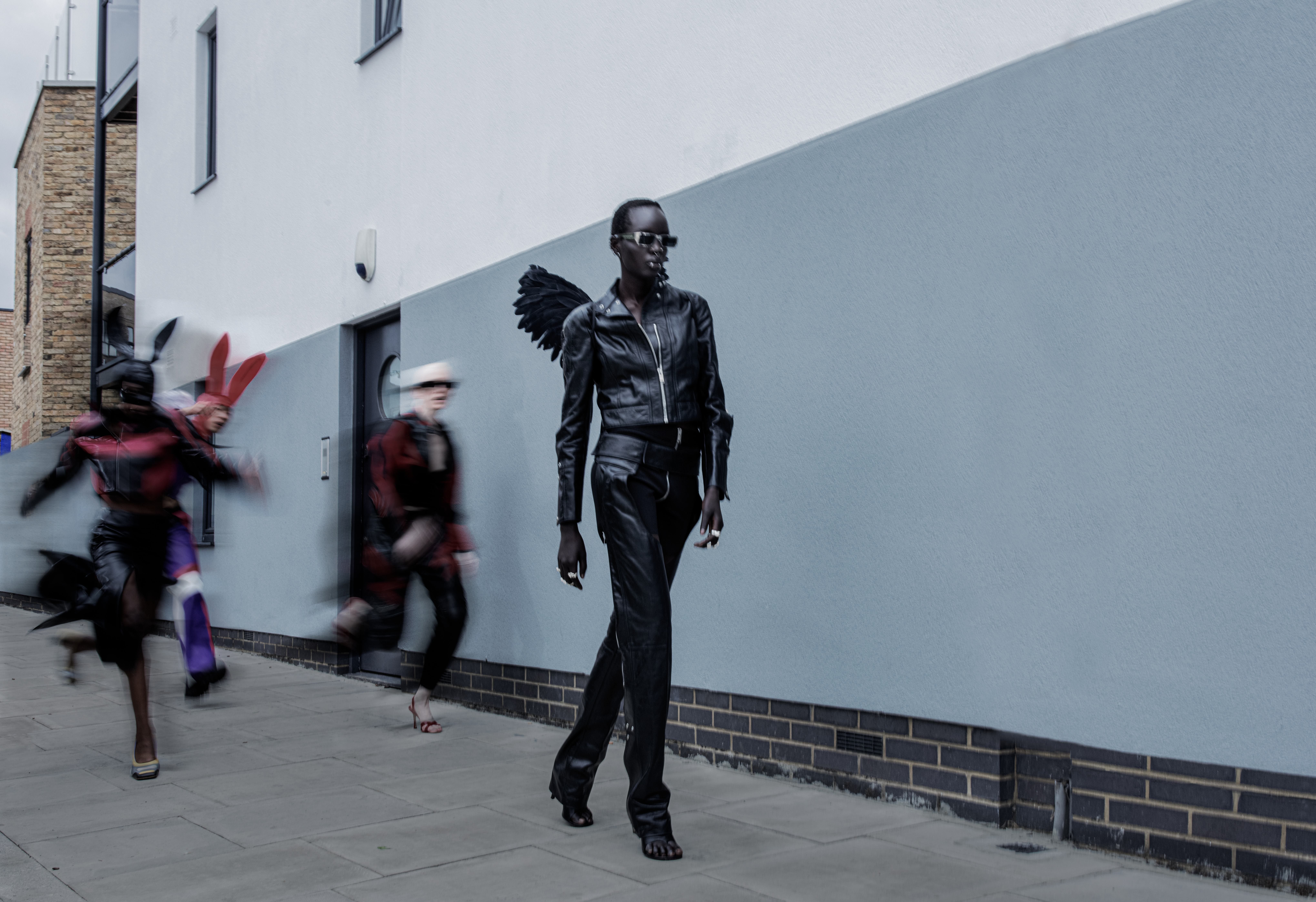A Peek Inside Joel Palmer’s Surreal Fantasy, Forbidden Flight
Freedom, empowerment and inner strength are just some of the universal themes bolstering and powering the boundary-pushing work from London-hailed triple threat Joel Palmer.
The director, photographer and artist has been making waves in the industry with his profound blend of surreal, otherworldly novelty. His photographs are to be viewed sensibly winding on a dreamlike world – but with vulnerable and self-assured introspection at the heart of its messaging.
And Forbidden Flight is his latest offering; a poignant, soul-busting photo series, with a narrative that not only charts the undeniable prowess of the artist, but also takes us on his journey of feeling stuck and out of sorts, but eventually coming to own it. Pandemic be damned, what does a creative soul do when life as we know it shuts down around us? Hit by an ongoing uncertainty surrounding the current crisis, with the lust of travel and work, Palmer took to the streets he calls home to turn frustrations into an otherworldly piece of fashion theatre.
Like much of the photographer’s work, the beauty in the images bristle with deep meaning, with luxury fashion incorporated into stark locations and offset with powerful movement. Below, Palmer breaks down the project from conception to execution. You’re welcome.
ON INSPIRATIONS
I’ve always been inspired by the role of the photographer in time-stamping pivotal moments in history and culture, and as such, I am inspired by those very moments happening around me. Projects always start out as a way for me to channel how I’m feeling about the world around me, and my background in fashion styling means I naturally just relate the two; each piece really plays a part in building the narrative of the image and the story. I could feel my own frustrations and emotions regarding the ever-changing restrictions echoed in the people around me, so it felt important to create my own reality in which I could express all of this through my art.
ON CREATIVE REFERENCES
The concepts of my shoots constantly develop, right from the moment I lay down the mood board, even up until the images are being shot. The research process for me is so rigorous and complex as I draw on so many different aspects of culture - fashion, politics, art. A lot of my reference points are cinematic editorials by the greats of the early ‘90s and ‘00s, such as Lindbergh, Klein, Meisel. Artists such as Sun Yuan and Peng Yu, with biblical inspired sculptures of a hyper-realistic fallen angel with an almost macabre twist. Movement is also always such an integral part of my work. Having come from a very heavily performance and theatre background, I always draw on the narrative ability of human motion to bring my images to life. Collaborating with performance artist IILYR on this project was a joy, as his total understanding of the links between motion and emotion really lent a depth to the story.
ON THE SOCIAL CONTEXT
This story is really built around the emotional pressure that the pandemic and restrictions have put on society. With people being restricted not only with travelling but even with what they can do IN the city and even their homes at certain points. I wanted to really convey a yearning for an escape: Akuol Deng Atem, my muse for this project, represented the perceived key to freedom, playing a fallen angel trapped in a city of oppression. I also specifically chose to shoot the editorial on location in East London, in places where I have seen communities really band together during these difficult times, places where culture and love still thrives despite any adversity faced. There’s also lots of imagery portraying restriction and oppression, something which the dancers took on beautifully and really brought to life.
ON VIEWERS’ EXPECTATIONS
Despite the world I have created being in some ways quite surreal, I want the viewer to be able to relate to the emotional quality of this story. I don’t think it’s my role to tell people how to interpret my art - one of my favourite things about being a creator is that people can draw their own meaning from the work and attach their own significance to it. This story may have been created with a certain context in my mind, but the rawness of it can speak to the viewer in whichever way they feel the image takes them.
from Articles https://ift.tt/3BKlaJK



.jpg)










Comments
Post a Comment